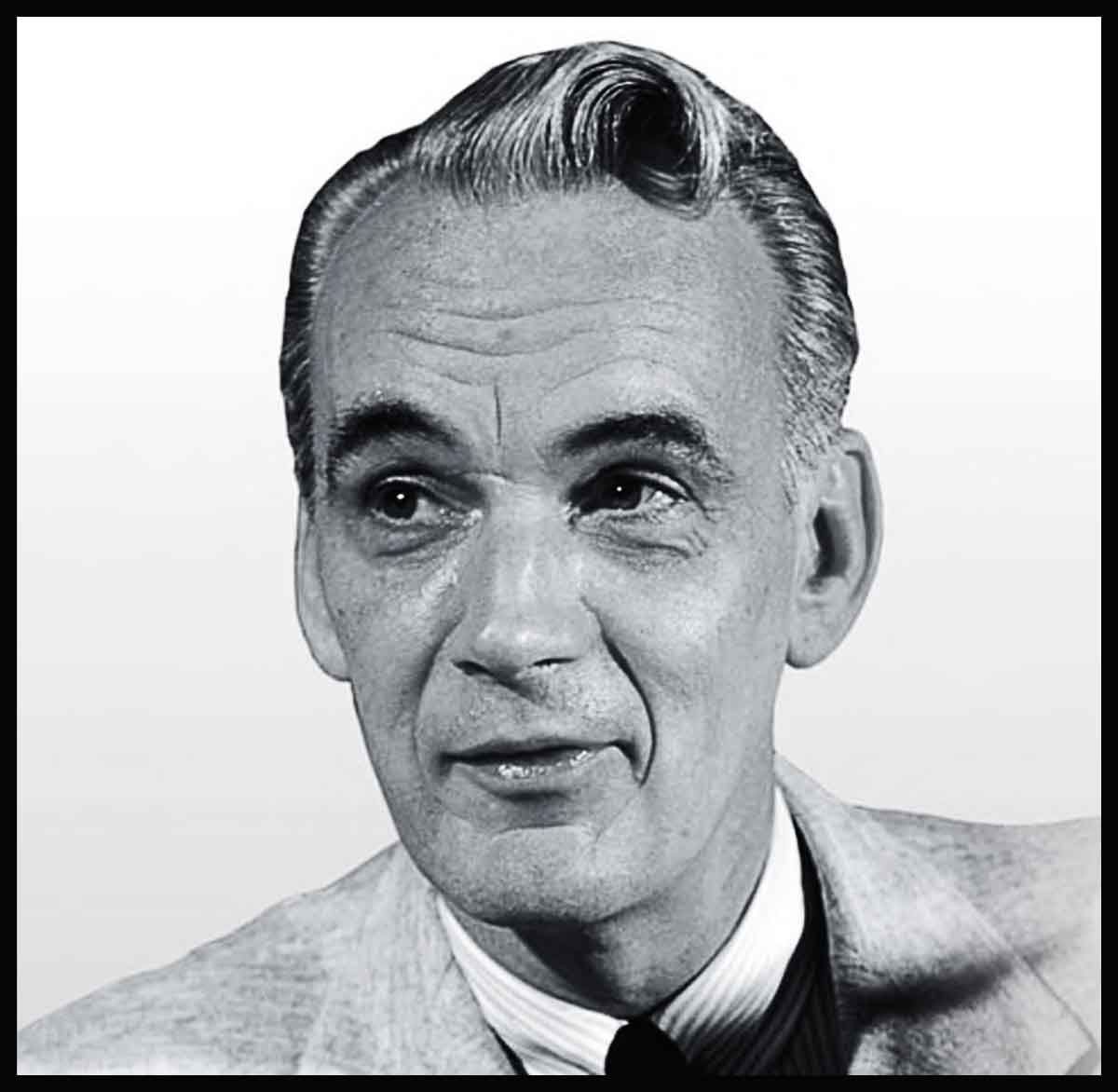
Great Designers—Virgil Exner
At his peak, Virgil Exner’s influence over Detroit was as significant as any designer’s. A true artist endowed with an air of sophistication, he brought vision, innovation, and a much-needed sense of restraint to 1950s’ American car design. Exner’s ideas breathed new life into Chrysler’s range and transformed the company’s fortunes. His best creations are now recognized as landmarks of automotive history.
“Nothing says style like a Virgil Exner design.”
PLYMOUTH VALIANT ADVERTISEMENT 1962
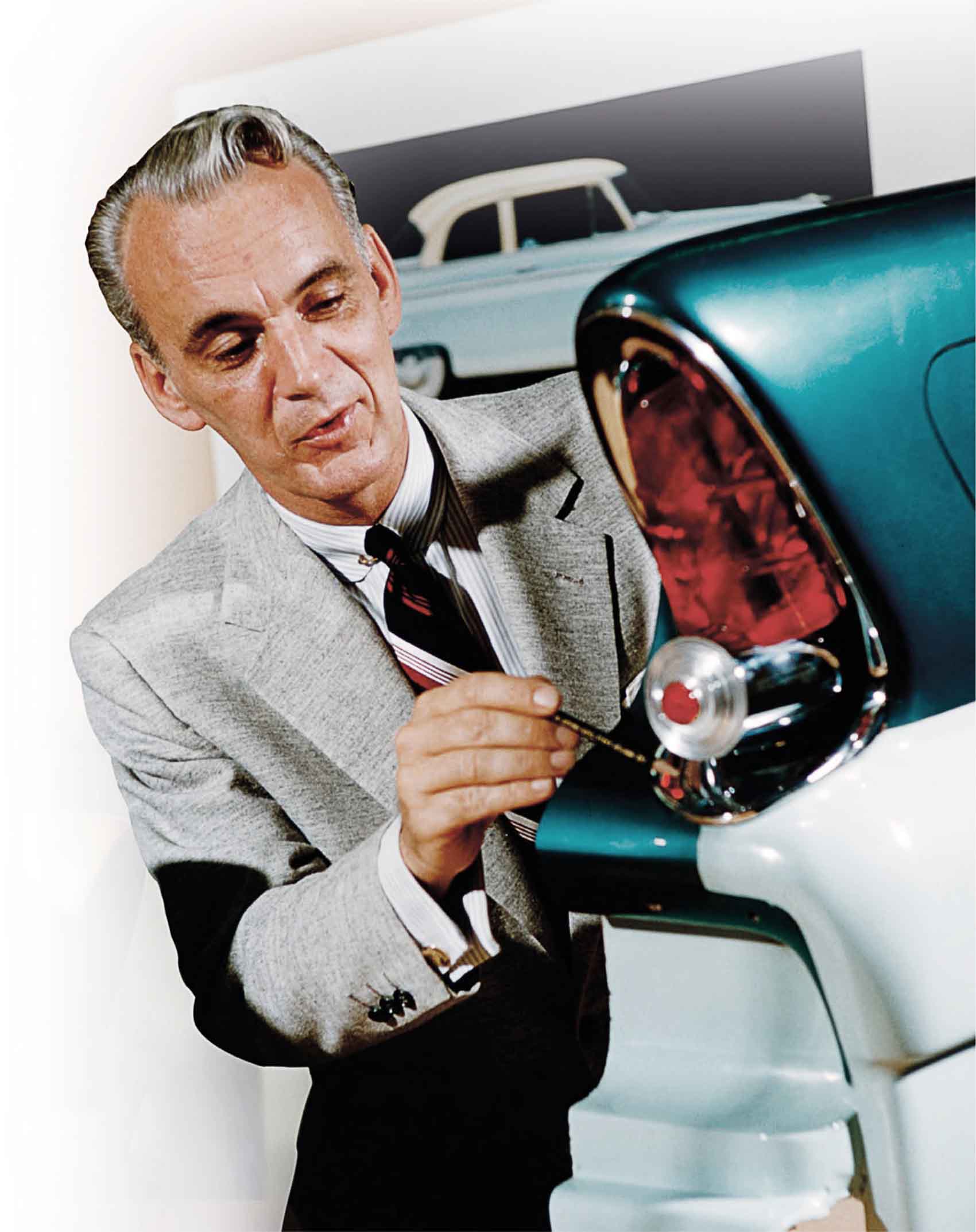
Photographed in 1954 Virgil Exner is shown here with a prototype for one of his 1955 “Forward Look” designs.
BESTRADDLED BY larger-than-life figures, such as Harley Earl and Bill Mitchell of General Motors, post-war American car design is often characterized as brash and overblown. In contrast, Virgil Exner’s sensibilities were more artistic, aesthetic, and tasteful. Throughout the 1950s his designs for both mass-production models and concept cars were notable for their understated looks and shapes that were unusually smooth by American standards.
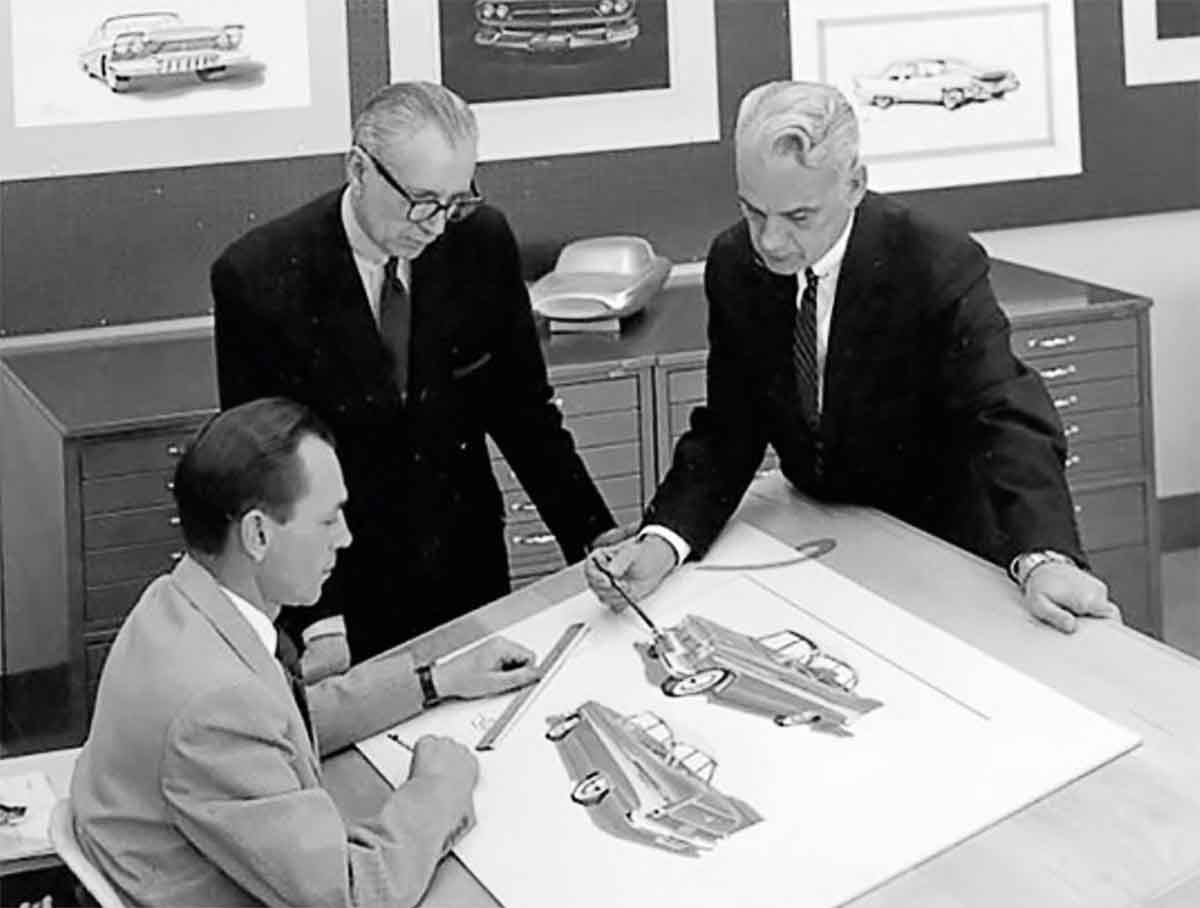
Exner is shown here in the “golden years” of his career, discussing designs for the Chrysler C-300, the first model to showcase his revolutionary “Forward Look” styling. Exner’s visions were perfect for an era of excess.
Born in Ann Arbor, Michigan, in 1909, Exner always showed a keen interest in art (which he studied at university) and cars (he built his own Ford Model T hot-rod). His first job was drawing for an advertising studio but, when Harley Earl saw some car designs he had penned for a local newspaper, Exner was offered a job in the Art & Color Section of General Motors (GM).
In 1938 Exner left GM to join Raymond Loewy’s industrial design firm, where he worked on styling Studebakers. Exner even contributed to the war effort by co-designing the DUKW amphibious vehicle.
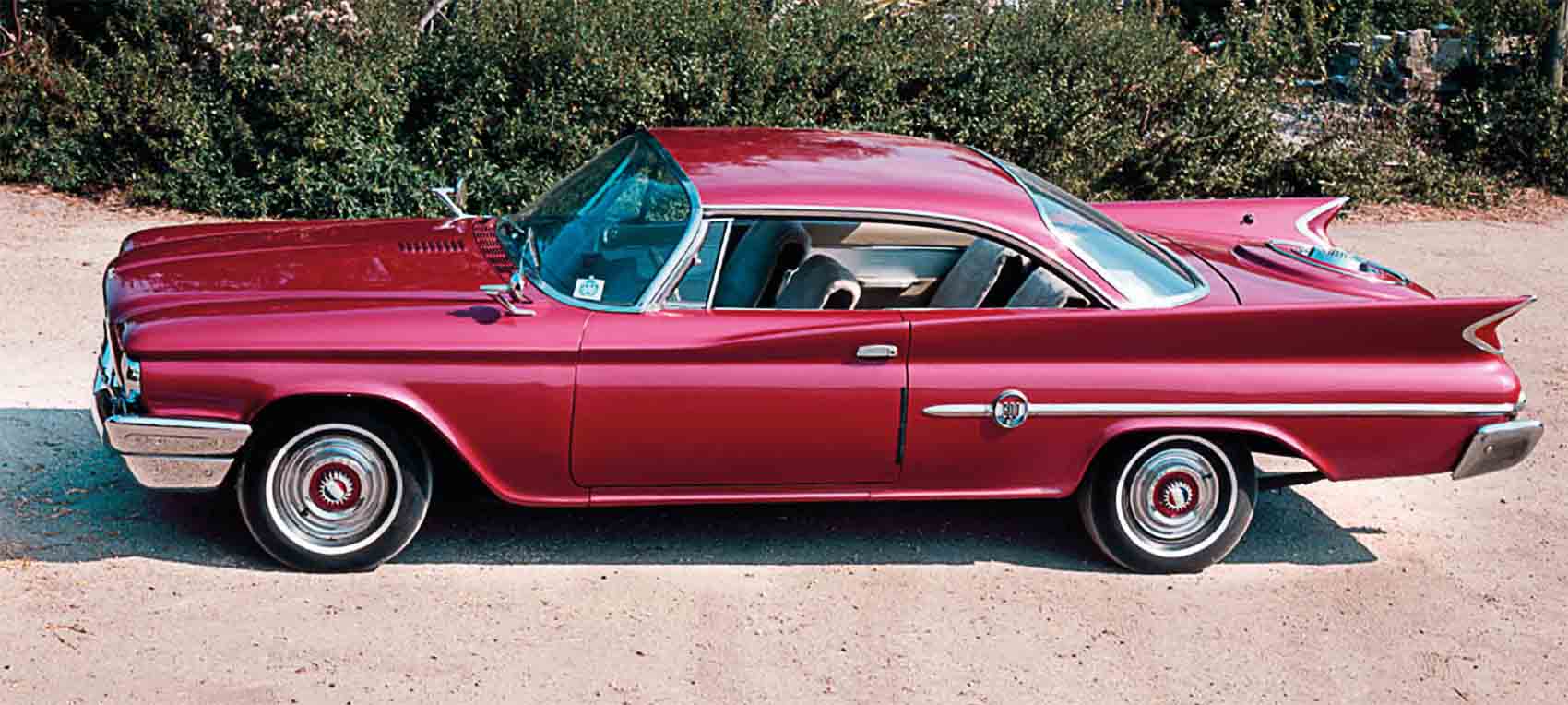
STEPPING INTO THE STARLIGHT
Exner and Loewy soon went head-to-head in competition to design Studebaker’s first postwar automobile. Exner emerged victorious and the result was the striking 1947 Studebaker Champion Starlight. Loewy was publicly credited for the design however, which intensified the rivalry between the two designers.
In 1949 Exner became head of Advanced Styling at Chrysler. Here, he had the brilliant notion of teaming up with an Italian coach builder to realize his dream of designing cars that featured simple outlines and minimal embellishment. The coach-builder was Ghia, a once-proud company that was now reduced to making bicycles in the post-war era. The first fruit of this collaboration was a landmark automobile that instantly propelled Chrysler to the forefront of the American “dream car” phenomenon: the K-310 of 1951. Chrysler trumpeted both its European influence and its distinctively American style (such as the dummy spare tyre on the boot lid). No less striking was Exner’s Chrysler D’Elegance of 1953, also built by Ghia. Volkswagen stepped in the following year and bought manufacturing rights to the D’Elegance, downscaling it to become the VW Karmann-Ghia.
The America press heaped praise on Exner’s designs, none more so than the elegant Firearrow concept car series of 1953-54. The tycoon Eugene Casaroll purchased the rights and produced 117 cars, renamed the Dual-Ghia, from 1956 to 1958.
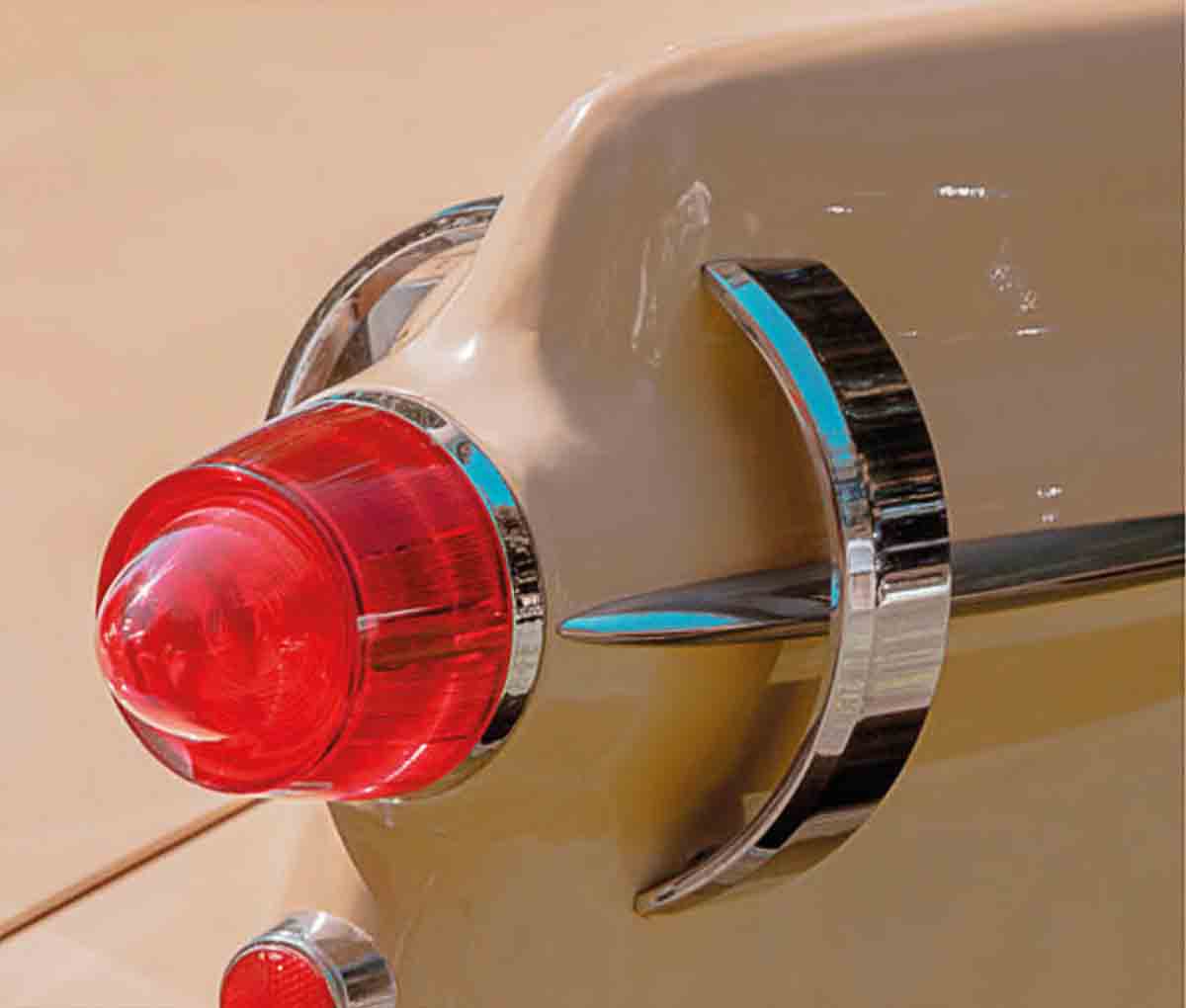
FORWARD LOOKING
When it came to cars designed for mass-production, Exner made a huge impact with his dramatic “Forward Look” styling, which arrived with the 1955 Chrysler C-300. The low roofline, short bonnet, and long boot marked a clear step into a bold new era of car design.
Exner’s sleek “Foward Look” creations advanced automobile aerodynamics significantly, and the huge tailfins he espoused were said to aid stability. The 1956 Dart show car had possibly the tallest tailfins ever seen, but the claim that the Dart had just one-third the drag of a conventional car was probably a stretch.
At this stage, Exner could seemingly do no wrong, designing acclaimed models for Dodge, DeSoto, and the up-market Imperial (a new marque that he instigated). Things quickly took a turn for the worse, however. With a fondness for caffeine, cigarettes, and alcohol, Exner suffered a heart attack in 1956. When he returned to work after surgery, other designers were in favor.
Gradually Exner was drawn into adopting the ever-increasing excesses of US styling. His late 1950s, gaping-maw grilles and contorted rear fins followed fashion, rather than setting it. By 1961 Exner had been ejected from design command at Chrysler.
Now independent, he attempted a string of abortive marque revivals: Mercer, Bugatti, Duesenberg, then Stutz (which actually saw production from 1969). It was an undistinguished end to an otherwise glittering career that set the benchmark for American car design. Virgil Exner died of heart failure in 1973, aged just 64.
Career highlights
> 1947 Exner’s first design to make production is the striking Studebaker Champion Starlight, although Raymond Loewy is credited for it
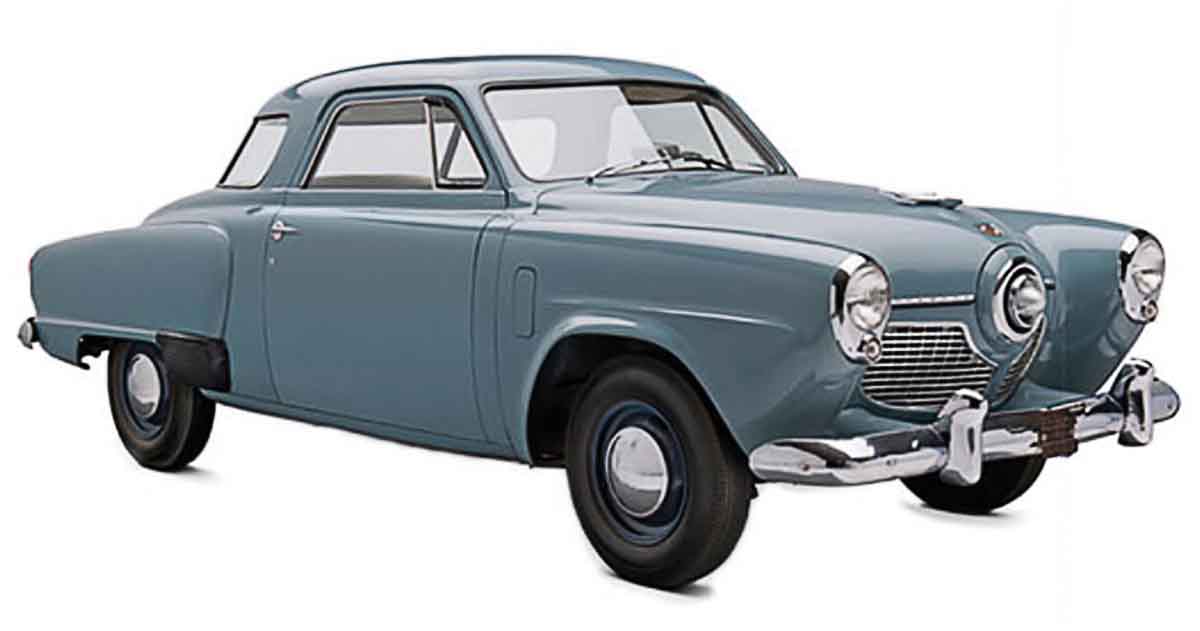
The hugely successful, five-passenger Starlight coupe caught the eye with its long, bonnet-like boot cover and panoramic rear. The bullet-nose, or “spinner,” front styling was a distinctive feature.
> 1951 The Chrysler K-310 concept car, built by Ghia in Italy, is a beacon of restraint and good proportion
> 1953 Exner’s best-known design, the Chrysler D’Elegance, is launched. It is later bought by Volkswagen
> 1953 The influential Dodge Firearrow concept car mixes Italianate flavors with classic American flair
> 1955 Exner instigates the creation of a new luxury marque—Imperial—and invents the highly regarded “Forward Look” for Chrysler
> 1957 Chrysler and Imperial models feature wraparound side glass—a world first
> 1969 Exner revives the Stutz marque with the boldly styled, retro Blackhawk, which will remain in production until 1987
It is a quote. The Classic Car Book – The Definitive Visual History 2016




